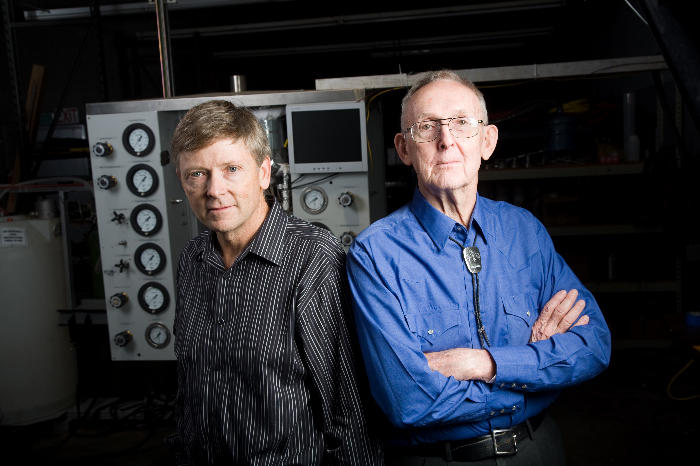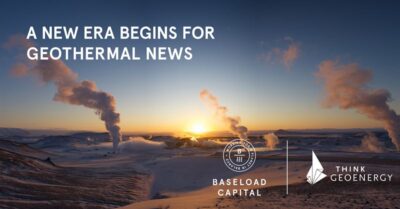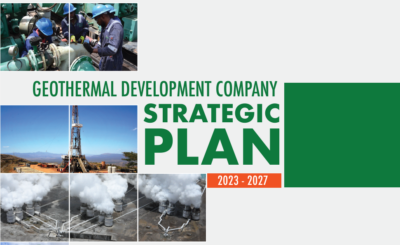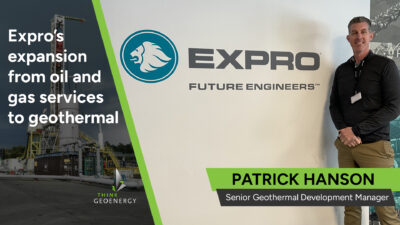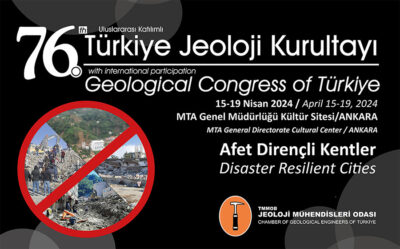Interview series: Jared Potter of Potter Drilling
In an interview with ThinkGeoEnergy, Jared Potter of Potter Drilling gives an insight on the status of development in his company and highlights the main goal of decreasing cost to drill deep wells for EGS projects.
Potter Drilling is going to have a booth at the GEA Trade Show at the GRC/ GEA event in Sacramento in October, so ThinkGeoEnergy wanted to here from Jared Potter about his company and his views on development in the U.S.
Jared Potter is the co-founder and president of Potter Drilling. Jared has developed technology for the energy industry for over 25 years as a technical director and co-founder of two companies focused on the development and commercialization of laboratory and rock testing equipment. Jared has a Ph.D. in Geology from Stanford University and B.S. and M.S. degrees in Geology from the University of New Mexico.
How would you describe your company and your key activities?
Potter Drilling is a technology development company and is focused on developing and deploying hard
rock drilling technology based on a mechanism called “thermal spallation” that can be used to drill or
excavate without actually contacting the rock. Potter Drilling is currently conducting pre-commercial field
trials funded by the DOE GTP in a location in the central San Joaquin Valley of California.
What is the status of development for the technology that Potter Drilling wants to offer and
when and how do expect it to be on the market?
Our technology is still pre-commercial. Our first commercial product will be a geothermal well
enhancement service based on our technology. We anticipate that this service will be commercially
available in 2014 or earlier.
What impact will Potter Drilling’s technology have and how will this effect drilling and drilling
costs for developers?
We believe that our well enhancement service will significantly improve the productivity of new and
existing wells, reduce well development costs, and reduce geothermal development project risk. It is our
goal to significantly lower the risk of developing geothermal power. Our long term goal is to reduce the
cost to drill the deep wells required for widespread deployment of EGS.
What do you consider the key obstacles and challenges for increased development in the U.S.?
The largest challenge facing geothermal development is access to development capital at rates that
make economic development of geothermal power possible. Our technology should help reduce the
financing cost of geothermal power by reducing exploratory and dry well risk associated with geothermal
development. Reduction in development risk will help geothermal developers lower their required rate of
return on equity and debt financing.
What do you think holds back speedier development of geothermal energy projects globally?
Again, it is the capital requirements and required return on capital that impede geothermal both in the
US and abroad. Outside of the United States, geothermal development is taking place in countries such
as the Philippines, Indonesia, and Chile that have less developed capital markets and higher country
risk than the United States. Lowering development risk will help globally as well. Reducing the costs
and time frames to drill and complete wells could have a significant effect on project development.
What are your expectations for the event in Sacramento, and who do you look forward meeting
at your booth at the Trade Show?
Because we are a pre-commercial company, we use the trade show as a means of informing the
geothermal community on the progress of our technology development. We look forward to meeting
anyone interested in learning more about Potter Drilling and working with us in the future.
